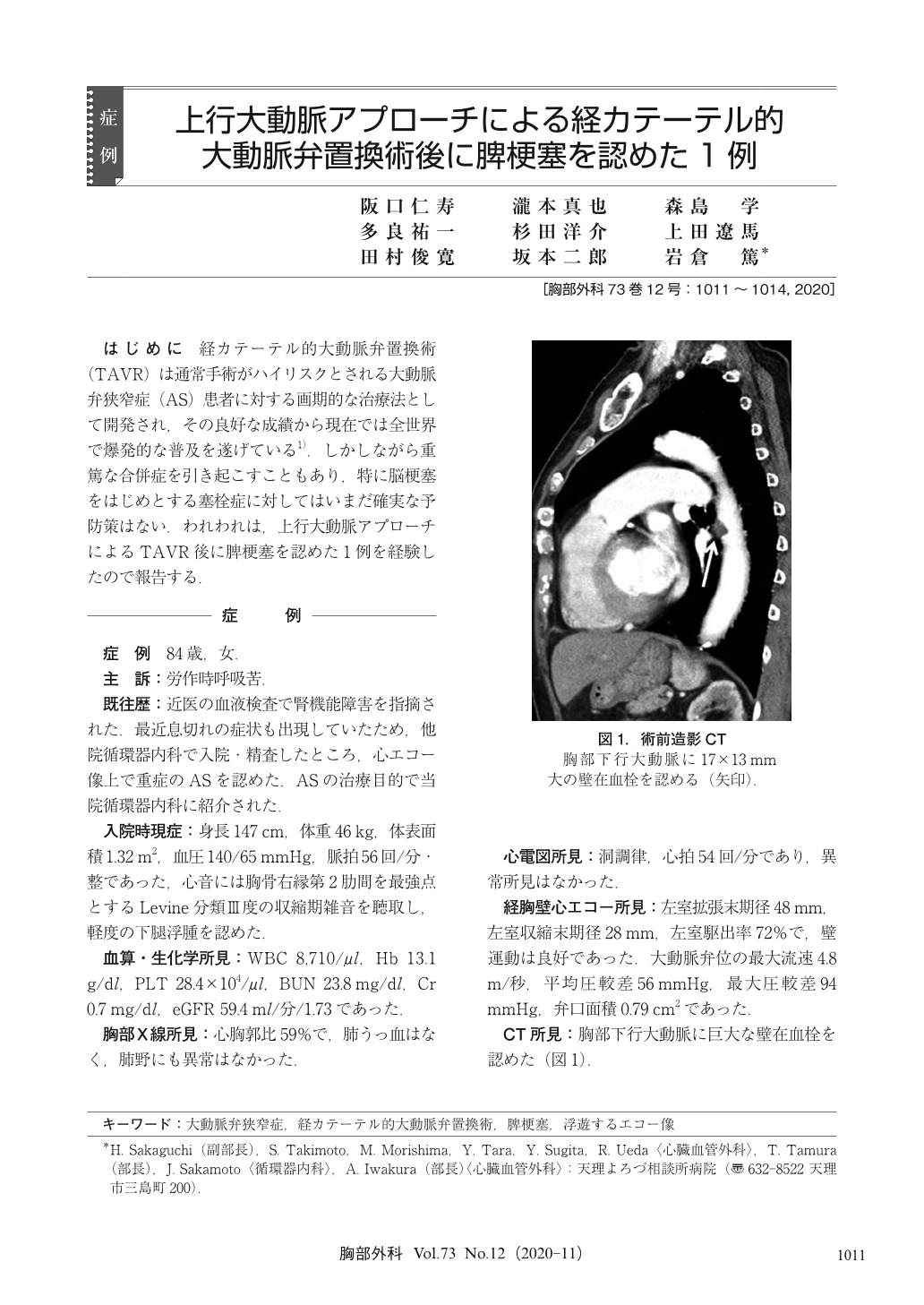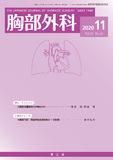Japanese
English
- 有料閲覧
- Abstract 文献概要
- 1ページ目 Look Inside
- 参考文献 Reference
はじめに 経カテーテル的大動脈弁置換術(TAVR)は通常手術がハイリスクとされる大動脈弁狭窄症(AS)患者に対する画期的な治療法として開発され,その良好な成績から現在では全世界で爆発的な普及を遂げている1).しかしながら重篤な合併症を引き起こすこともあり,特に脳梗塞をはじめとする塞栓症に対してはいまだ確実な予防策はない.われわれは,上行大動脈アプローチによるTAVR後に脾梗塞を認めた1例を経験したので報告する.
Transcatheter aortic valve replacement (TAVR) in the treatment of patients with severe aortic valve stenosis (AS) has evolved on the basis of evidence from clinical trials. A 84-year-old woman with a complaint of dyspnea was diagnosed with severe AS. A preoperative computed tomography (CT) revealed huge mural thrombus at descending aorta, therefore we planned direct aortic access for TAVR to avoid embolism. Transesophageal echocardiography revealed fluttering echogram at left ventricular outflow tract. After TAVR the fluttering echogram disappeared. A postoperative CT revealed spleen infarction. In such cases, we should keep in mind that surgical AVR can be a treatment option.

© Nankodo Co., Ltd., 2020


